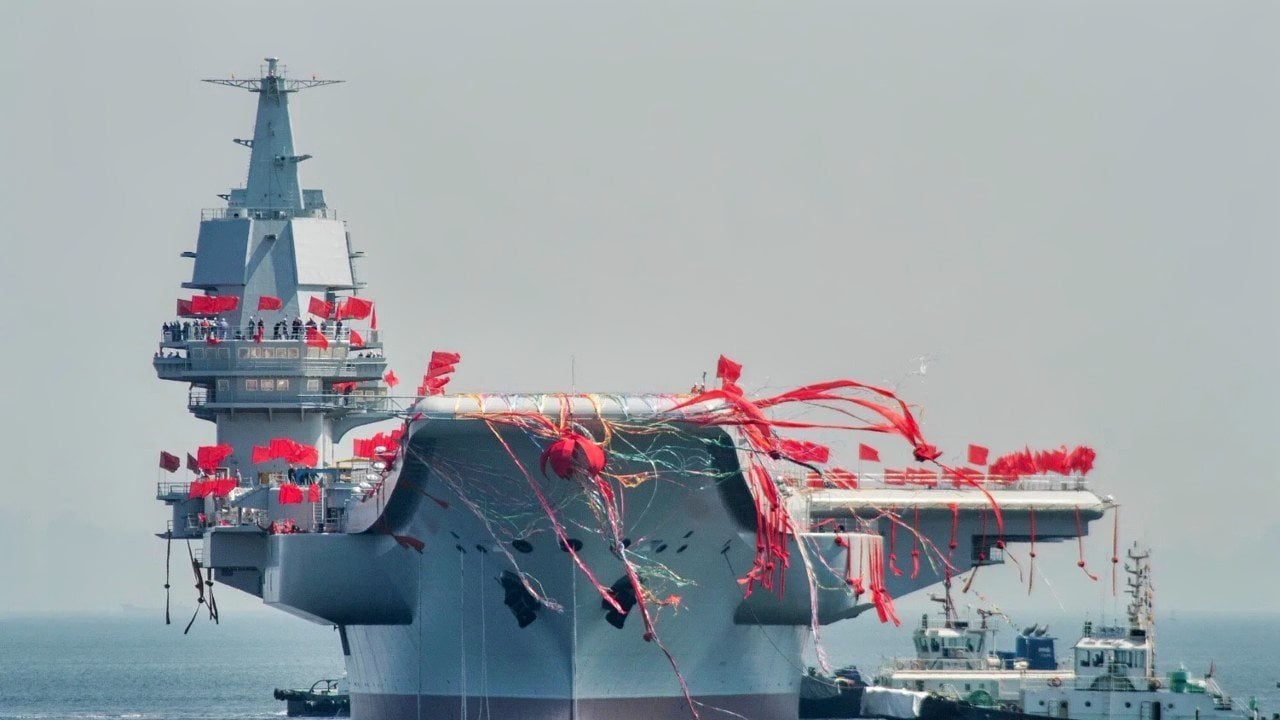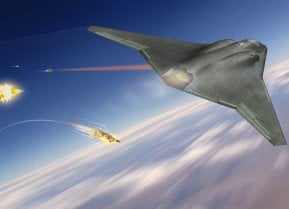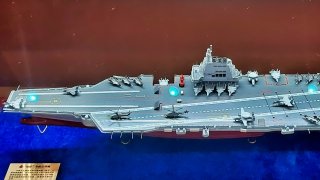China's New 80,000 Ton Aircraft Carrier 'Rivals' U.S. Navy Supercarriers
China’s Type 003 Fujian, its third and most advanced aircraft carrier, continues sea trials and is on track for its first deployment by 2025-26.
Summary and Key Points: China’s Type 003 Fujian, its third and most advanced aircraft carrier, continues sea trials and is on track for its first deployment by 2025-26.
-At 80,000 tonnes, it rivals the U.S. Navy's supercarriers and features advanced electromagnetic launch systems, making it only the second carrier globally to use this technology.
-Fujian's air wing will likely include upgraded J-15B Flying Shark and J-35 fighters.
-The People's Liberation Army Navy (PLAN) aims to have six carriers by 2033, underscoring China's ambitions to challenge U.S. carrier dominance, though other nations like India, the UK, and Japan are also developing or operating carriers.
China's Type 003 Fujian Aircraft Carrier is on the Move
The People's Liberation Army Navy's (PLAN's) third and most advanced aircraft carrier is continuing to undergo sea trials and appears to be on track to begin her first deployment sometime next year. The Type 003 Fujian headed to sea last week to begin the latest round of sea trials – the fourth since the vessel was launched more than two years ago.
Beijing typically holds its cards close to the chest when it comes to its military hardware, but the second-domestically-built carrier – named for the southeastern province directly opposite Taiwan – has been seen as a symbol of pride in China, and the PLAN has touted the capabilities of the carrier.
Although conventionally powered, at 80,000 tonnes, it is among the largest military vessels in service today after the U.S. Navy's Nimitz-class and Gerald R. Ford-class nuclear-powered supercarriers.
According to The South China Morning Post, a new military-themed TV series airing on state broadcaster CCTV was filmed on the carrier's flight deck and may highlight the functions of its electromagnetic launch system. The Fujian is the first PLAN carrier to be equipped with advanced catapults, and only the second vessel in the world to use the system after the United States Navy's USS Gerald R. Ford (CVN-78).
The War Zone also reported that the Chinese flattop could employ a "retractable enclosed control station built into the flight deck that catapult officers on the ship will use to launch planes. The kind of integrated control station is found on U.S. Navy aircraft carriers, where they are commonly called the 'bubble.'"
"Operator, Punch the ‘Launch’ Button"
Navy Catapult Control Station used by“Fujian” Type 003 CV | "Hardening" Special Sets Trailer(Edited) pic.twitter.com/uD7vzpnzrC
— David Wang (@Nickatgreat1220) September 11, 2024
China's new aircraft carrier is expected to enter service by late 2025 or early 2026, while its air wing will likely include a variant of the Shenyang J-15B Flying Shark, incorporating CATOBAR launch capability, and the Shenyang J-35 fighter jets, a carrier-based variant of the FC-31; as well as the Xi'an KJ-600 airborne early warning and control (AEWC) aircraft.
Aircraft Carrier Ambitions
The Type 003 Fujian is the first domestically designed carrier, and the PLAN has set a goal to have six carriers in service by 2023, making it the world's second-largest blue-water navy after the United States.

Earlier this week, Sandboxx also reported, "It's notable that only China and the U.S., for now, seem to be making real investments in carrier superiority. Russia's only aging aircraft carrier, the Admiral Kuznetsov, has been in service-life-extension overhaul since 2017. The country had reportedly been considering a new supercarrier, the Shtorm, but the project now seems increasingly unlikely."
However, that report from Sandboxx didn't note that the UK's Royal Navy operates two aircraft carriers; France has a nuclear-powered carrier as its flagship and is currently developing its replacement; while Spain and Italy each operate carriers – with the latter deployed to the Indo-Pacific this summer. Moreover, Japan is now converting two of its multirole helicopter destroyers into carriers that could operate with the F-35B Lightning II, and South Korea has also announced plans to build a light carrier.
Finally, India has two carriers in service, and New Delhi has discussed plans also to build a third carrier. China may be seeking to be a carrier powerhouse, but besides the United States Navy, those other countries have similar – albeit smaller – carrier ambitions as well.
Author Experience and Expertise: Peter Suciu
Peter Suciu is a Michigan-based writer. He has contributed to more than four dozen magazines, newspapers, and websites with over 3,200 published pieces over a twenty-year career in journalism. He regularly writes about military hardware, firearms history, cybersecurity, politics, and international affairs. Peter is also a Contributing Writer for Forbes and Clearance Jobs. You can follow him on Twitter: @PeterSuciu. You can email the author: [email protected].
Image Credit: Creative Commons and/or Shutterstock.


